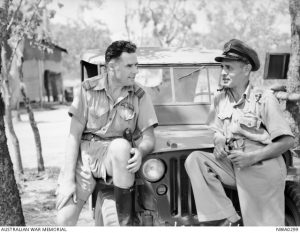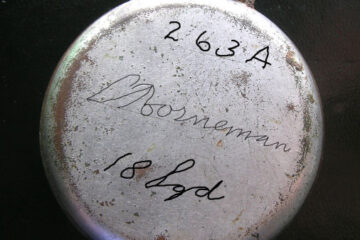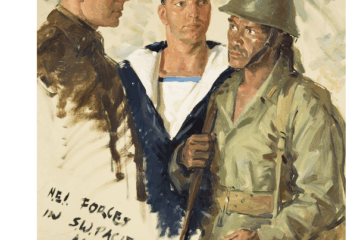On September 7, 1944, a Dakota C-47 aircraft carrying 20 people crashed into a mountain near Mossman, Queensland, while returning from a reconnaissance visit to Merauke, Dutch New Guinea. The plane was operated by the Royal Netherlands East Indies Air Force (ML-KNIL) and had four crew members and 16 passengers on board, including two civilians. Among the passengers was Samuel Jacob.
Samuel Jacob, born in Ambon was a headmaster in Merauke, Dutch New Guinea a job he combined with being a local civil administrator. Together with his family he was evacuated in August 1942 to Australia.
Here he worked for the Netherlands East Indies Government-in-exile in Camp Columbia for the re-building of Indonesia after the war.
Samuel went back to Merauke in 1944 for a reconnaissance visit and the way back on December 6, 1944 the plane’s last radio contact was 15 minutes before the estimated time of arrival at Cairns. The plane encountered bad weather and crashed into a hill in the Daintree National Park, about 12.3 km northwest of Mossman, at a height of 1,300 meters. The crash site was in an isolated and mountainous area that was difficult to access.
The search and rescue operations were suspended after a few days as no trace of the aircraft or the 20 occupants was found. The families of the victims were left in uncertainty and grief for decades.
The wreck was not found until January 1989, when a exhausted hungry group of botanists stumbled upon some metal debris and alerted the authorities. A scientific expedition from Australia and New Zealand confirmed that it was the missing Dakota C-47 with the registration DT-941 (VH-RDK) and the serial number 12880.
The 20 victims were finally identified and buried with full military honours at the War Cemetery of Cairn on July 28, 1989. Dutch relatives were flown over to Sydney and then to Cairns for the ceremony. The event was attended by representatives of the Australian and Dutch governments and military forces, as well as media and local community members. I was present as a radio correspondent for the Dutch radio station Veronica.
The discovery of the Dakota C-47 wreckage near Mossman in 1989 sparked renewed interest in the forgotten tragedy and shed light on the circumstances surrounding the crash. The scientific expedition that confirmed the identity of the aircraft also conducted a thorough investigation into the cause of the accident.
Based on their findings, it was confirmed that the crash was primarily attributed to the severe weather conditions the plane encountered during its journey. The Dakota C-47 had flown into a storm, which caused significant turbulence and reduced visibility. The pilot’s attempt to navigate through the adverse weather ultimately led to the aircraft colliding with the mountain.
The wreckage provided important clues and evidence that further corroborated the initial hypothesis of weather-related factors. The impact and subsequent fire caused extensive damage to the aircraft, making it difficult to extract additional information about the crash from the wreckage alone.
However, the discovery of the wreckage brought closure to the families and friends of the victims who had waited for decades without knowing the fate of their loved ones. The identification and subsequent burial of the 20 victims with full military honours at the War Cemetery of Cairns allowed them to finally say their goodbyes and honour the memory of those who had perished.
The ceremony held on July 28, 1989, was a poignant moment that brought together representatives from both the Australian and Dutch governments, military forces, media, and the local community. It symbolized the enduring friendship and cooperation between the two nations, emphasising their shared history and commitment to honouring those who sacrificed their lives during times of war.

The story of Samuel Jacob, the headmaster and civil administrator in Merauke, added another layer of significance to the tragedy. His involvement in the Netherlands East Indies Government-in-exile’s efforts to rebuild Indonesia after the war highlighted the broader context in which the crash occurred. It underscored the challenges faced by Indonesian war refugees who sought shelter in Australia during World War II and their struggle for recognition and citizenship, particularly in the face of the discriminatory White Australia Policy. His wife Annie was the first person to cause a crack in this discriminatory policy.
In retrospect, the crash of the Dakota C-47 near Mossman serves as a solemn reminder of the sacrifices made during the war and the lasting impact it had on individuals and communities. The discovery and subsequent burial of the wreckage brought closure to the families, while also drawing attention to the historical significance of the Royal Netherlands East Indies Air Force’s role in the war against Japan and the subsequent liberation of Indonesia.
The tragedy also prompted further reflection on the experiences of Indonesian refugees in Australia and the importance of recognising their contributions and providing them with support and acknowledgement. It became an opportunity to address the historical injustices caused by discriminatory policies and fostered a renewed commitment to inclusivity and understanding between nations.
Squadron Leader Leslie “Smokey”

One of the other victims of the crash was Squadron Leader Leslie “Smokey” . He was the commander of the Australian element of No. 18 (NEI) Squadron, and was awarded the Dutch Order of Orange Nassau for his “highly valued assistance, both in training and under active service condition”, he was also the air liaison officer to the Dutch forces.
Paul Budde (2023)
See also Oz at War names of the victims.


